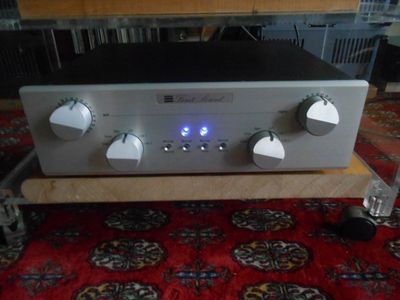

In the last few years, increasing numbers of preamps having passive attenuation have been designed at a wide range of prices. While one can jump between similar active preamps in an effort to improve quality there is a more extreme solution that radically streamlines the operations of the preamp and manipulates the signal less, thereby achieving the goal of simplifying the component, resulting in less degradation of the source signal. The typical hobbyist is going to need one, and often the default solution is the active, or powered, preamp.

Audiophiles tend to form strong opinions about the supposed merits of a separate phono preamp, transport and DAC or monoblock amps, but the functionality of a stereo preamp is different. What is an ardent audiophile to do? In a word, simplify! Once a person has simplified the signal path between components, attention can be turned to streamlining the components themselves. With all the active, as well as passive, electronics being crammed into systems nowadays it’s a wonder people have a semblance of good sound at all. A long time ago there was an axiom that the best sound was to be obtained via the shortest signal path. I am discouraged by the proliferation of power conditioning, power filtering, power “transforming” – not to mention all the quantum crap – being glommed onto by enthusiasts which degrade the signal as much as supposedly help. They are all very cool and techie, but miserable sound quality seems to be the collective curse.Ĭloser to home in Audiophile Land I shudder when I see discussion of system building where an individual disparages aftermarket cables, yet has jammed a processor into the signal path. These may be repositories of information, but they certainly are not repositories of great sound. This is not to mention the plethora of devices with ear buds with pretense to good sound. “Simple means purer,” I have often thought as I have worked through a cornucopia of two channel devices that diminish the purity of the audiophile experience.


 0 kommentar(er)
0 kommentar(er)
